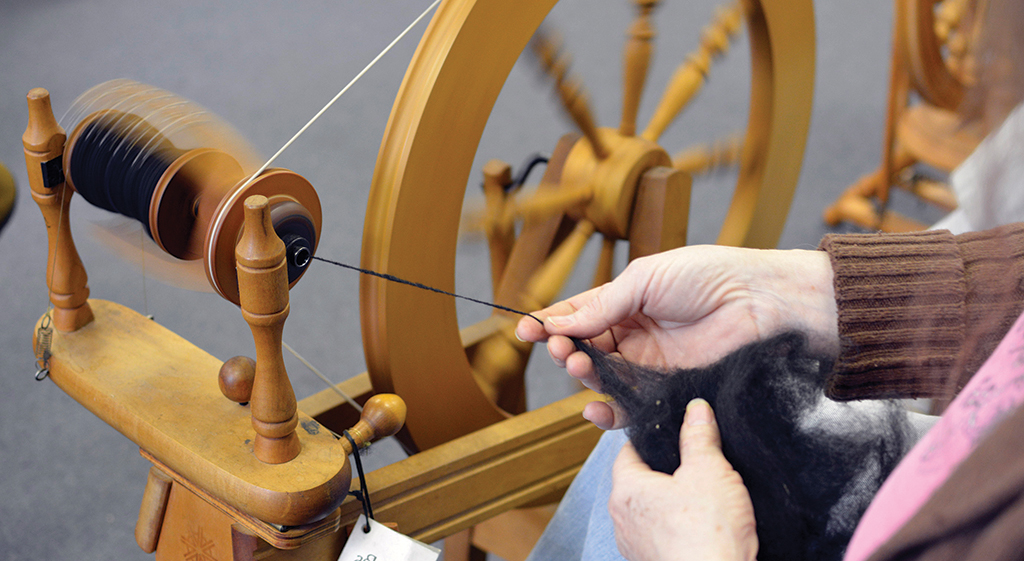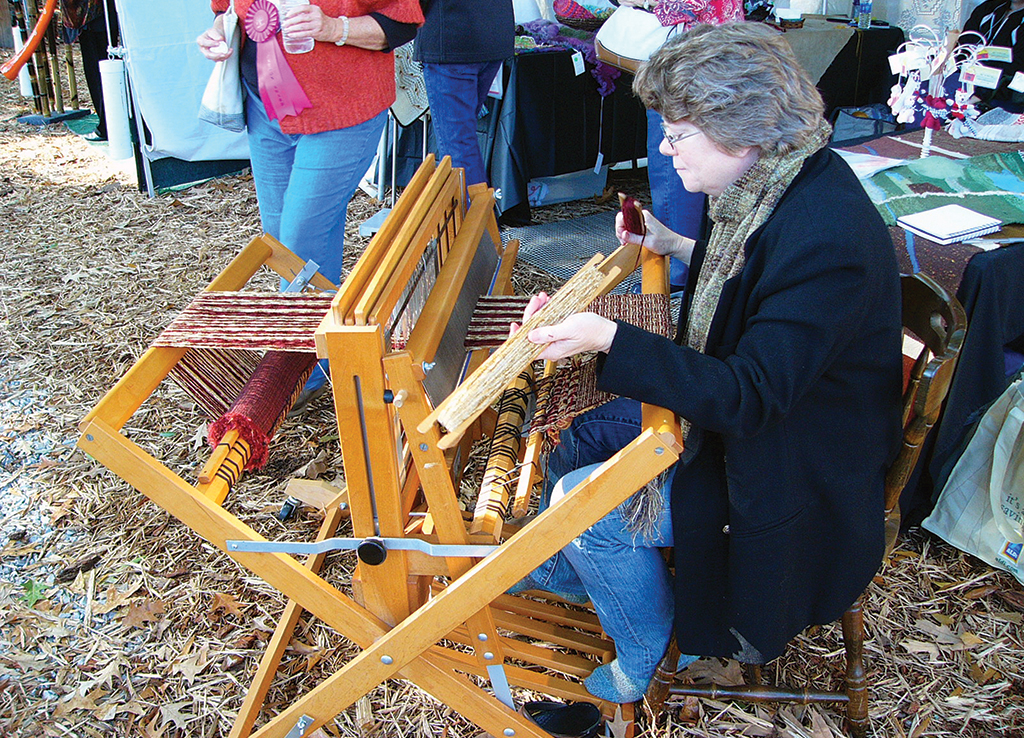
Fiber guilds promote old crafts with a new twist
By Lisa Harrison
In cozy meeting and living rooms across Alabama, groups of women meet regularly to share their love of all things fiber. Knitting needles click, spinning wheels hum, weaving looms whoosh and clack. Tatting shuttles flash to and fro between chains of thread; crochet hooks inch along rows of stitches.
In today’s era of laboratory-created and machine-manufactured fabric, a dedicated and growing number of artisans are reviving centuries-old techniques of handcrafting with wool, cotton, silk, angora and other natural fibers. Using the old methods, modern crafters now create “art yarn” that is a far cry from the yarn of yesterday.
The new yarns are multi-textured, multicolored and may sport intricately spun loops and coils. Weavers, knitters, crocheters and other needleworkers use these yarns to create vibrant clothing and fabrics never imagined by the crafters who came before them. Recent decades have seen these crafters form themselves into numerous fiber guilds.
Across Alabama, nearly a dozen fiber guilds with members both urban and rural, whose arts range from knitting and crocheting to yarn spinning and weaving, meet regularly to share techniques and promote these venerable crafts.
Betty Ann Lloyd founded the South Alabama Fiber Enthusiasts (SAFE) guild in 2009 when she discovered some equally fiber-minded friends. The guild allows members who practice one fiber art to learn about other crafts. After seeing crafts they have not tried before demonstrated, people who were knitters or crocheters only have now become spinners and weavers as well, says Lloyd.

The Montgomery guild began attracting many new members when it hosted a “Worldwide Knit in Public Day” in 2009. This event is the largest knitter-run event in the world, with local groups meeting on the same date all over the globe. Attendance grew in each subsequent year the guild hosted the local version. This year’s Knit in Public Day was June 13; 42 countries participated last year.
Building on that success, the guild established its own larger local event, The Festival of Alabama Fiber Arts, in 2012. (There was no festival this year, but organizers hope to bring it back in 2016.)
Guilds across the state participate in many such events. The festivals often include juried shows of spun, woven, and needle crafted pieces. There are exhibitions of techniques. Handcrafted products are offered for sale by vendors from around the country. Festivals featuring guild members include the Kentuck Festival, the Sheep-to Shawl event, and the Alabama Designer/Craftsmen Fine Craft Show.
The success of these festivals, with counterparts in every state, demonstrates the new popularity of traditional crafts. In days past, fiber artists might have met in small “sewing circles,” but the new festivals draw large crowds of crafters plus spectators who learn and often become crafters themselves.
The techniques used may be ancient, but modern technology has contributed to the surge of interest. Betty Lloyd points out that crafters now have access to YouTube tutorials that can guide beginners and help experienced artisans who encounter difficulties with a project. Answers to “how to” questions are a mouse click away.
Additionally, social media provide connections and forums to discuss techniques. Ravelry.com is a popular Internet community used by many Alabama fiber guild members. Such online gathering places connect people who share the desire to preserve crafts and exchange ideas.
SAFE member and knitter Peggy Collins says, “It’s very important to keep the old techniques alive. To lose knowledge is a tragic thing. The more we know about how things were originally created, the more we can appreciate what we have today. When we know how to create items using old methods, and do create items that way, they become so much more valuable. A hand-knit sweater is so superior to a store-bought, machine-stitched one.”
Carol Timkovich, president of the West Alabama Fiber Guild, agrees, saying guilds offer “the benefit of touching the past by continuing the techniques our foremothers passed on to us, and touching the future when we teach someone younger.”
In addition to preserving skills, guild members benefit from the creative process itself. Lloyd, Collins, and Timkovich agree that fiber crafts provide a uniquely relaxing practice bordering at times on meditation. Timkovich adds that the communities also help reduce stress through companionship: “troubles shared lessen; joys shared multiply.” The opportunity to be involved in community activities that promote preservation, relaxation, and artistic creation draws many people to the guilds.
Fiber guilds are an important resource for crafters interested in learning and preserving techniques from days gone by. Modern crafters study these old methods and riff on them with new ideas, creating arty yarns and fabrics with a 21st century appeal. Meeting with other enthusiasts, they share ideas, learn new techniques, and experience the camaraderie of kindred spirits.





